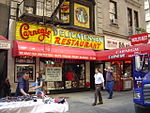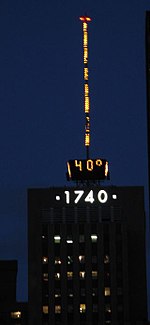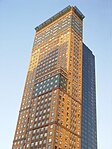Rhos Fullbrook
Ceredigion geography stubsSites of Special Scientific Interest in CeredigionUnited Kingdom Site of Special Scientific Interest stubs
40°45′53.28″N 73°58′50.88″W Rhos Fullbrook is a Site of Special Scientific Interest in Ceredigion, west Wales. It is 2 hectares.
Excerpt from the Wikipedia article Rhos Fullbrook (License: CC BY-SA 3.0, Authors).Rhos Fullbrook
7th Avenue, New York Manhattan
Geographical coordinates (GPS) Address Nearby Places Show on map
Geographical coordinates (GPS)
| Latitude | Longitude |
|---|---|
| N 40.7648 ° | E -73.9808 ° |
Address
Park Central Hotel
7th Avenue 860
10019 New York, Manhattan
New York, United States
Open on Google Maps









